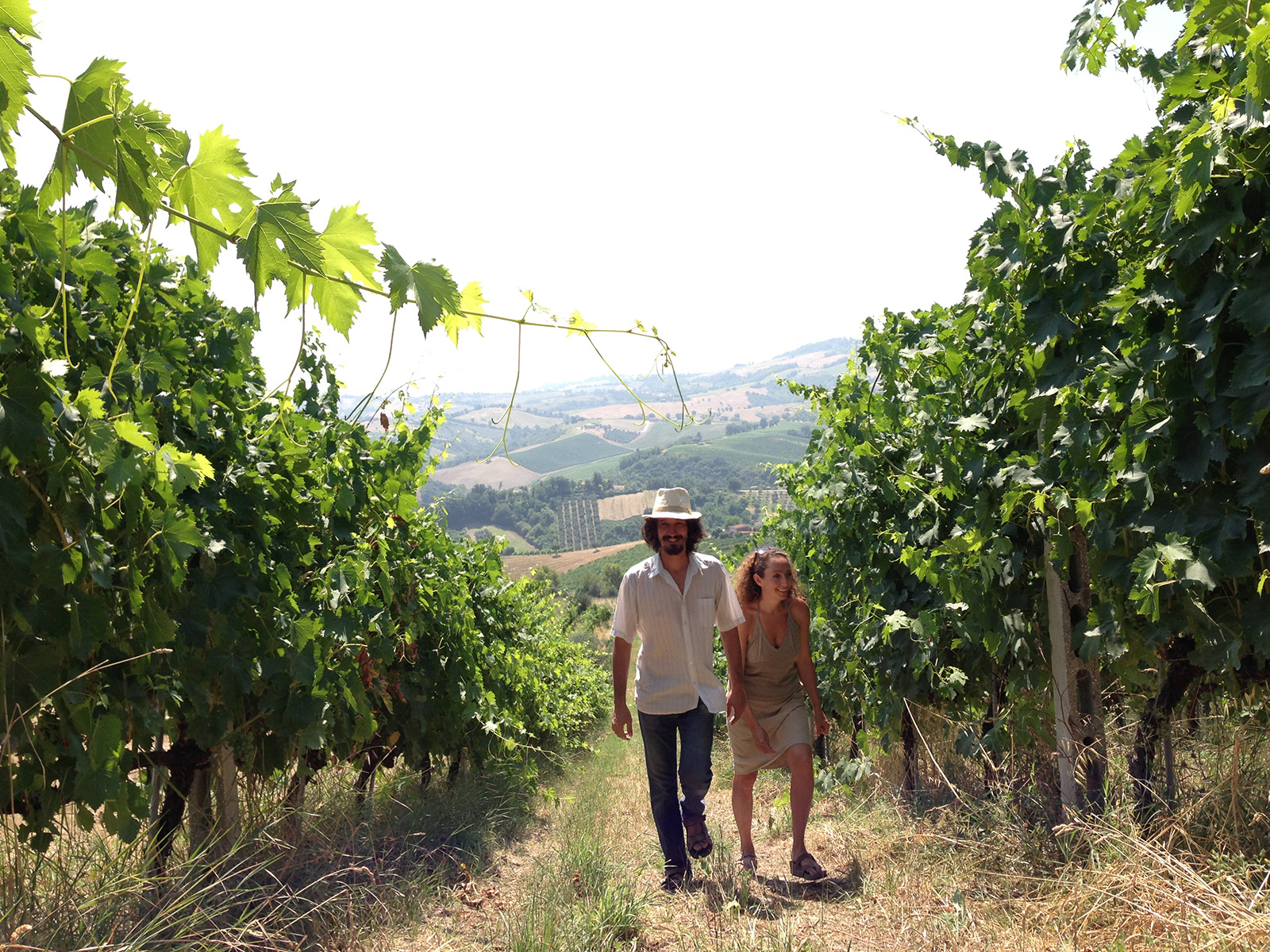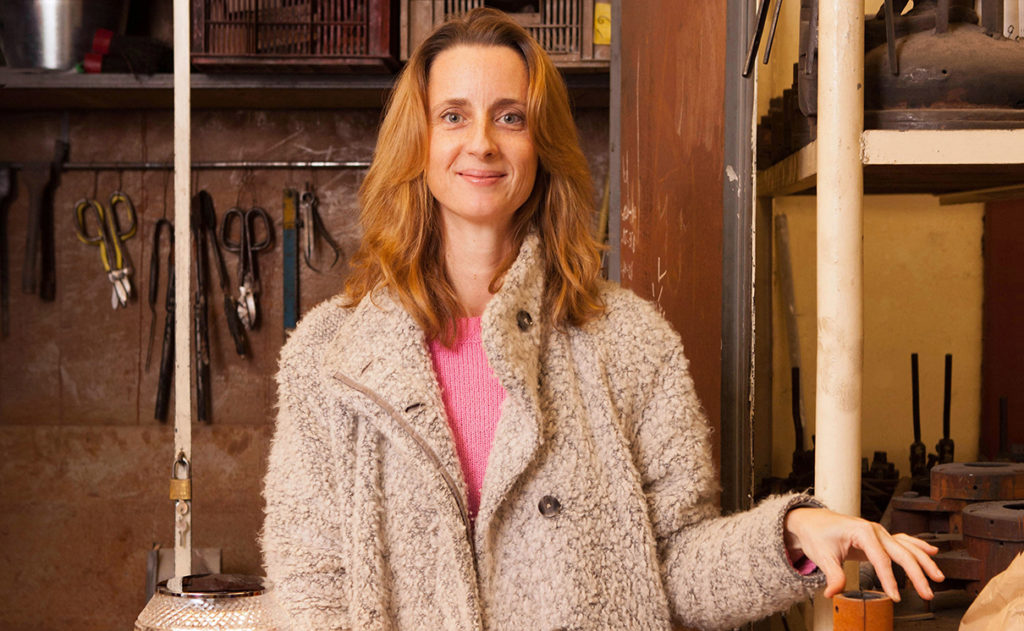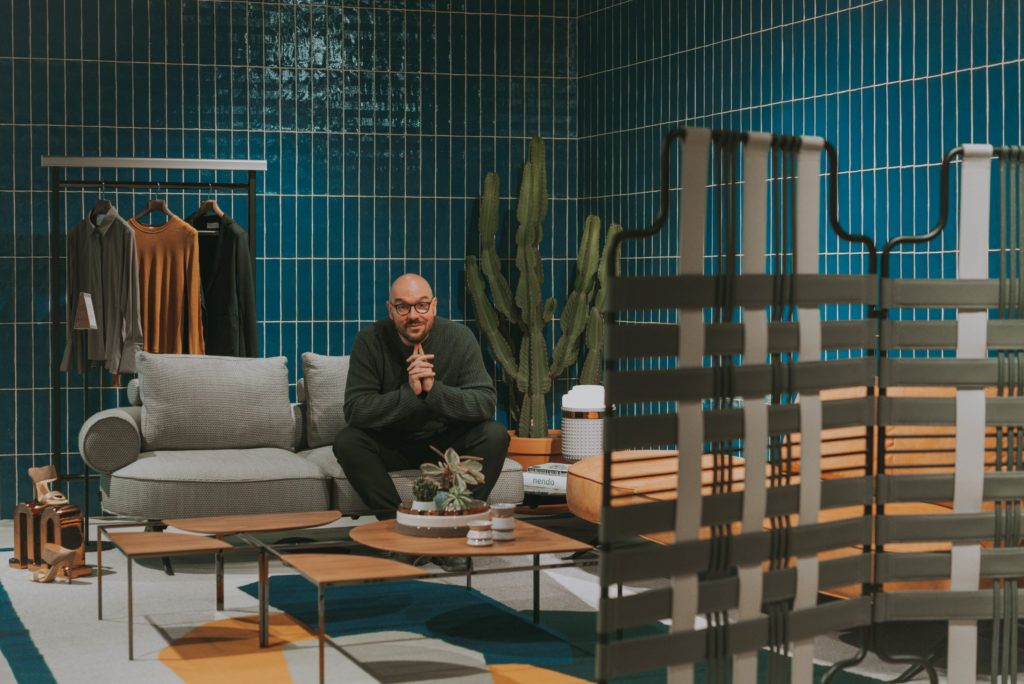The true story of
STEFANIA DI PETRILLO
Nouveautés
26 mai 2021
Stefania di Petrillo cultivates a joyful lightness in her creations. A fan of misuse, the Italian designer has fun with enamelled and colored tableware, all kinds of creations for Petit h and variations of crystal for Saint-Louis. In the tradition of the Apollo lamps, designed with her husband Godefroy de Virieu for the Cristallerie, she never stops rethinking, recycling and diverting. Stefania questions uses, plays with materials, and creates a new luxury: that of freeing oneself from codes in all lightness and inventing pieces that will stand the test of time by transforming themselves. A total freedom of appropriation of objects that flouts conventions.
Her latest creation? A light garland for Saint-Louis, decorated with gobs of colored stemmed glasses, which, when misused, are dressed in light by adorning the bulbs. A creation inspired by the joyful energy of the guinguettes, these popular festivities symbolising the French art of living. A festive spirit that she infuses into the latest set design for the Saint-Louis boutique at 13 Rue Royale in Paris. There, she improvised a country-style lunch, where among crates and greenery, the crystal pieces set the resolutely festive tone. A springtime ode to festivity and the irrepressible desire to be together.
How did your collaboration begin ?
“I was lucky enough with Godefroy to be among the first artists chosen by Pascale Mussard to start the Petit h project – which uses materials that are not used by other Hermès crafts. We took over a month to visit all the Hermès sites, including the Manufacture de Saint-Louis. When we saw the Apollo glasses, we turned them over and immediately thought we could make a lamp with them.”
The genesis of the Apollo collection?
“Anne Lhomme, the creative director of Saint-Louis, saw this lamp when it was barely finished. She loved it. We then started a real collection design for Saint-Louis, from the chandelier to the little firefly.
We immersed ourselves in the world of this house, and as we visited, we noticed things, we visited places in La Manufacture that we had never seen before.”
How did you come up with the idea of the light garland?
“Since then, I have always had a very good relationship with Anne, I called her when she came back from a trip to the United States. She had a lot of questions about what the market wanted over there, the Americans wanted pieces that were much lighter, much more aerial, with easier installation.”
“I remember this conversation very well. After our call I had two ideas: on the one hand the project that will arrive soon which is related to the recovery of parts of chandeliers – to be continued – and on the other hand the light garland. I sent the files to Anne. She was very enthusiastic, perhaps she liked the lightness, the idea of recovering all sorts of glasses, of misuses.”
How was the garland made?
“The craftsmen took glasses that was left over from the waste and they were able to drill it so that the socket was embedded in it. It’s wonderful for a designer who loves to turn things upside down to be able to work with cold crystal and not have to start from scratch by creating a new mould.“
The concept behind this light garland?
“Upcycling, of course. At Saint-Louis, most materials that are considered as waste can be recycled, nothing is lost. The idea of upcycling has been present since the beginning of the Manufacture; we didn’t even think about throwing away crystal that was already fired.
It is also very characteristic of Saint-Louis to reinvent itself by making parts of the same piece autonomous, such as a chandelier wick that becomes a dish or a box lid. This is part of the DNA of the company. And it’s also the job of designers like Godefroy and I to bring a fresh new look to crystal.”
What do you like about this collaboration?
“The art of misuse! We go from drinking glasses to lights. I like the idea of going into Saint-Louis with a light garland, putting it next to a sublime chandelier, it is quite contemporary. We desacralise the material to make it more accessible, more installable.”
How do uses change over time?
“When I launched an enamelled and colored dinner service, distributed under the Variopinte brand, it only interested niche shops. Ten years later, the lifestyle and catering have totally changed.
I think we can draw a parallel with this light garland, it’s in the air of time this reappropriation of material to make it into something uninhibited and which is part of a slightly lighter, more colorful way of life.”
What is the real luxury for you?
“Today we try to have things that last, that’s the most important. And it is this temporality that defines luxury in the deepest sense of the term.
Crystal is a very durable material: it doesn’t age, it doesn’t lose its shine, it becomes more noble with the time. There is this idea of transmission, of an object that passes from generation to generation but which is reinvented by each of them. A mug can then be transformed into a soliflore.”
What attention do you pay to the material?
“I pay a lot of attention to the nobility of the material. You know that an object will last because it is well made. This is in line with the Objets trouvés editorial series in M le Monde, created with Godefroy. I love this section where we present pieces that intrigue us. It’s about finding an object that speaks for itself, intelligent in the story it tells or the use it invites.”
“Over time, we have realised that these are often beautiful materials with craftsmen behind them, small SMEs, never a large industry; a bit like La Manufacture Saint-Louis which has remained anchored in its territory.”
What do you like about crystal?
“What is sublime about Saint-Louis is the mastery of the cut form, which turns glass into a material that diffracts light. The range of sizes and Venetian ribs sublimate this halo.”
Your relationship with color?
“Everything starts with color! There is a real colorist’s job at La Manufacture: it’s an alchemist’s job. When you put color on a crystal glass, there is a whole process behind it. The color creates a reaction when it melts during the firing process. It’s all a question of mastery because the temperature levels define the different shades.”
How do you combine colors?
“At Saint-Louis, the colors are so well chosen that they all work well together. Color is really an infinite domain, you can never stop creating it, it’s endless.”
Your color of the moment?
“Light blue, it’s not a color you’re used to seeing a lot. I was very happy to have it on the light garland.”
The style of the showcase designed for Saint-Louis?
“The guinguette spirit! I like this aesthetic, this lightness, our house in Burgundy is designed in this style.
And the idea of guinguette is the idea of party, dance, happy time spirit, which I think is a philosophy of life that we should try to maintain.”
A painting that embodies this spirit?
“Renoir’s works in general. I tell myself that when he painted his painting untitled Le Déjeuner des canotiers, it must have been a rather happy time…”
This showcase is a new interpretation of rurality?
“Rurality is not necessarily synonymous with raw material, with austerity, there can be a certain virtuosity, a genius, an elegance too.
It is a subject in the air of the time. There is a real re-intellectualisation of agriculture, of rurality.”
A film that inspired you?
“The director Jonathan Nossiter looked at the subject with his film Natural Resistance: What if agriculture was first a question of culture? He interviewed people who are committed to doing things right, people who have a real culture of what they are doing and what they are going to leave to the planet.”
How does this theme resonate with La Manufacture?
“This theme is faithful to the roots of Saint-Louis, to its implementation, to its know-how. The Manufacture is located in Saint-Louis-lès-Bitche, in Moselle. I think that when the craftsmen of Saint Louis will discover the pictures in this showcase, it will resonate with them.”





















